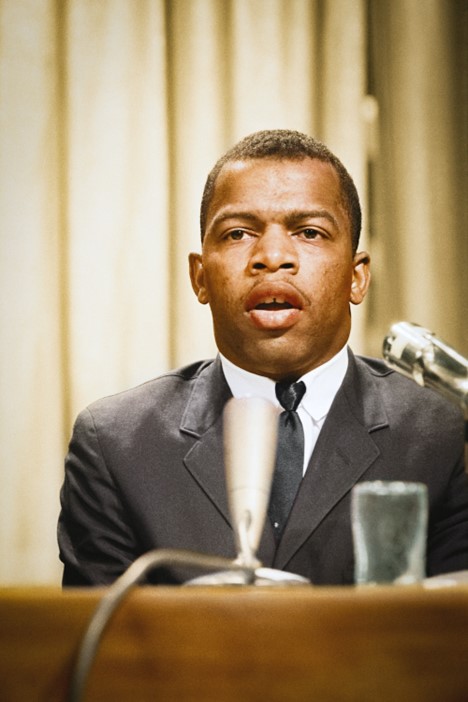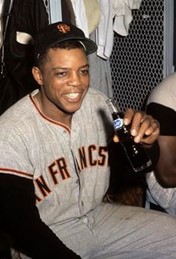Editor’s Note: This week’s guest contributor continues our exploration about who our heroes are and why. Bob Francis is a retired nonprofit executive who spent his career working with young people and advocating for juvenile justice and a real chance for all children.
Joseph Campbell wrote about the “Heroes Journey.” In it, life is referenced as a journey wherein we may have very different heroes to propel us forward. When I think of heroes, three people come to mind. I’ll tell you about them because they shaped my life’s work for social justice, as well as guiding my retirement years.
From his early twenties, John Lewis was committed to helping end segregation. As president of the Student Nonviolence Coordinating Committee (SNCC) at 23 to his death in 2020 after serving over 33 years as a United States Representative from Georgia, Lewis spent a lifetime fighting for the civil rights for people of color. My admiration for him inspired a retirement trip in 2019.
I wanted to track the roots of slavery leading to the Civil War, the subsequent Jim Crow period of separate but not equal treatment of people of color and reflect on my career in social justice. I started in Montgomery, Alabama with Bryan Stevenson’s Legacy Museum and The National Memorial for Peace and Justice, more commonly known as the Lynching Museum.

I visited the Rosa Parks Museum and the Freedom Riders Museum as well as the history of slavery at the Alabama State Museum and the Jefferson Davis’ house. I walked across the Edmund Pettus Bridge in Selma, AL, the site of Bloody Sunday on March 7, 1965. There, John Lewis and the Reverend Hosea Williams led a group of 500-600 protestors on a march from Selma to Montgomery. John Lewis suffered a skull fracture at the hands of police and 58 others were hospitalized. This march stood out because it was nationally televised, and the American public was outraged. It led President Johnson to enact the most far-reaching civil rights legislation in history, the Civil Rights Act. As for John Lewis, he was only 25 years old when he led this march. Even earlier, in 1963 he was one of the featured speakers at the March on Washington. Throughout his life, he took extreme risks on behalf of his people.
My second hero was not so famous but certainly important in my eyes. He is my friend Bill Kosturko and he is my inspiration for my final chapter on this earth. Six years ago, Bill was diagnosed with terminal Stage 4 stomach cancer. This led Bill to start planning. He called his family together — his wife Jane and his adult children George and Liz to prepare them for what to expect after he was gone. He planned for every contingency. Bill always thought of others first. He is one of the kindest and most generous people I’ve ever known. A few days ago, Bill and I were having breakfast together and reflecting on the past six years of experimental clinical trials, his cure from stomach cancer only to discover that he had liver cancer. It had spread into his lymph nodes. He then had half his liver surgically removed and polyps removed from his spleen and other organs. He beat cancer again, and he has been entirely free of disease for almost two years.

Bill’s lesson for me is to never give up; take care of the people you love, and the people who love you. Every day, show gratitude for what you’ve been given. For over 30 years I’ve known Bill and I’m hoping for another twenty years. The pleasure and the gift of having Bill as my friend helps keep me humble and focused on what’s important in life.
Let me close by reflecting on one of my sports heroes — Willie Mays, one of the greatest baseball players of all time. Willie’s idea of baseball was that it was entertainment for the fans and his job was to be the best entertainer he could be. When a fly ball traveled anywhere within catchable distance from him in center field, he would hesitate until the last second before he charged after the ball to make a spectacular catch. When Willie ran the bases, rounding second base, if his hat flew off between second and third, you knew he was going to try for home, never being thrown out. Willie’s lesson to everyone who followed him was that baseball was a game and it should be fun. His job was to put a smile on the fans’ faces, watching him play the game with abandon! My lesson was: anything you do in life, you should go all out but it should also be fun. It should make you smile, and make everyone you touch smile!
Three very different heroes – John Lewis, Bill Kosturko and Willie Mays. My heroes and my mentors!




What inspirational heroes these men have been and are! You have given me the idea to journal about my own heroes. Thank you for your post!
Thanks Mary, glad this post was inspiring to you. All the best in your explorations. Tom
We all need heroes! We have to keep our eyes peeled for inspiring stories like these.
Thank you.
Thanks Sally. Indeed without heroes it is easy to slide into despair and a failure to act when it is our turn to act. Heroes inpsire us to listen to our better selves individually and collectivley as communities. Peace, Tom